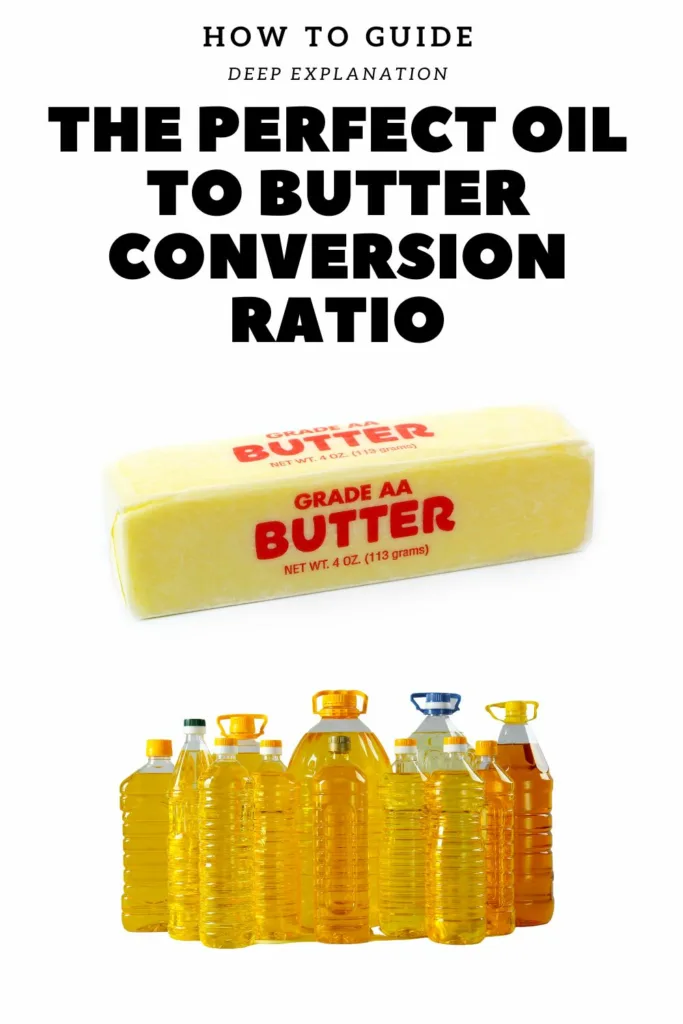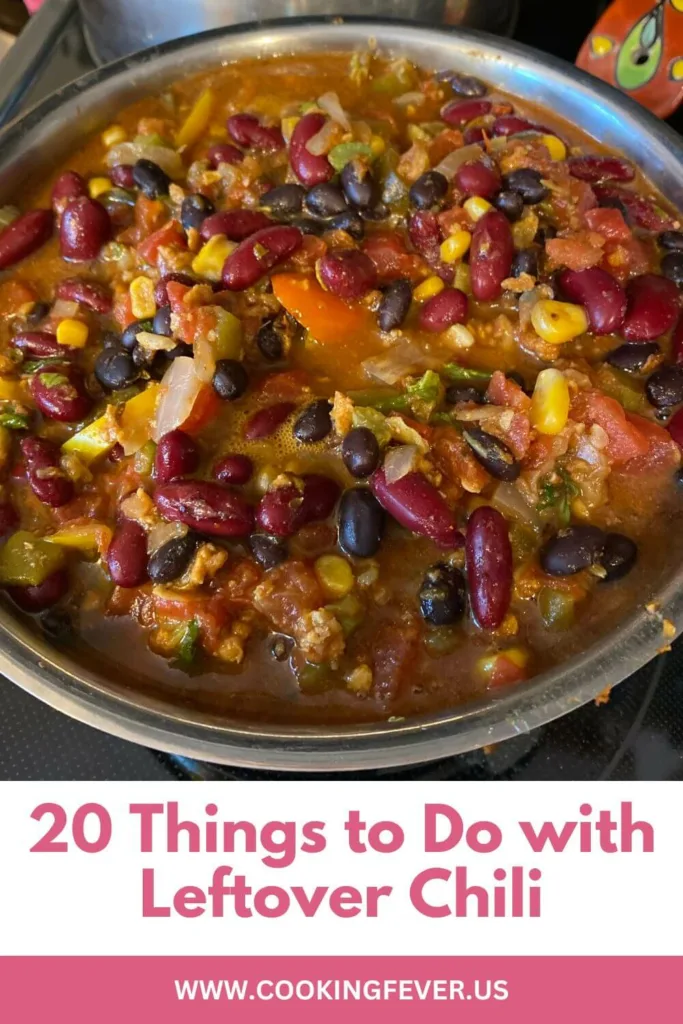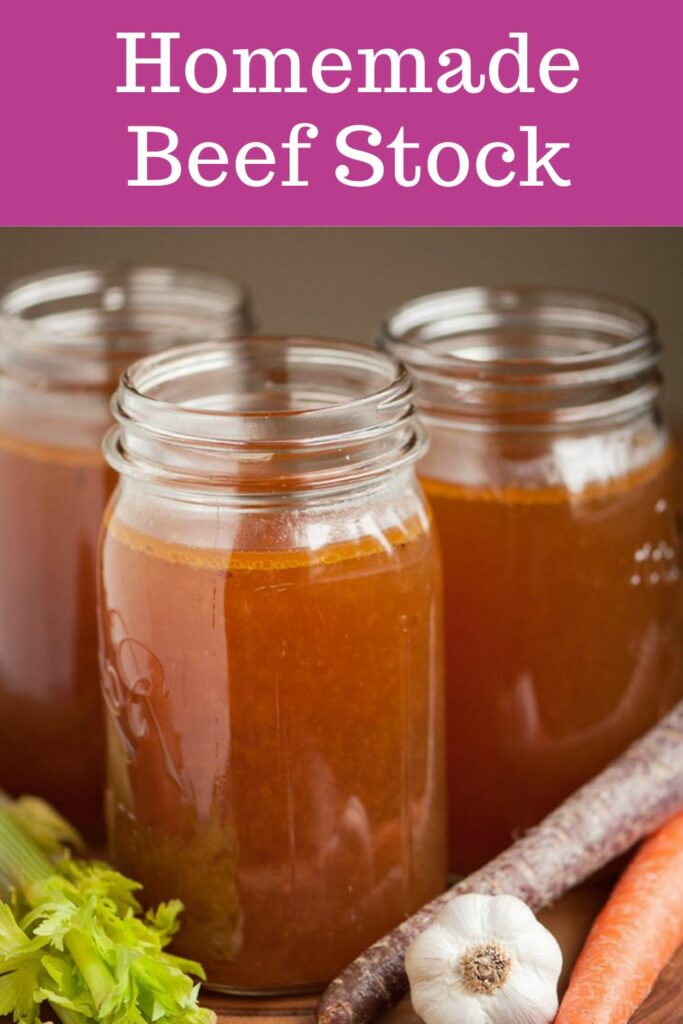In the world of cooking and baking, it is not uncommon to come across recipes that call for specific measurements of oil or butter. However, what happens when you find yourself in a situation where you need to substitute one for the other? This is where understanding the oil to butter conversion ratio becomes essential.
Whether you are looking to make a recipe healthier by reducing the amount of oil or simply prefer the taste and texture of butter, knowing how to convert between the two can make a significant difference in the outcome of your dish. In this article, we will explore the perfect oil to butter conversion ratio and provide you with the information you need to successfully make this substitution in your recipes.
Understanding the conversion ratio is crucial because oil and butter have different properties that can affect the final result of your dish. Oil is 100% fat, while butter contains both fat and water. This means that when substituting oil for butter, you may need to adjust other ingredients or cooking times to compensate for the differences in moisture content.
Converting oil to butter involves determining the appropriate amount of butter to use as a replacement for a specific measurement of oil. Similarly, converting butter to oil requires finding the right amount of oil to substitute for a given quantity of butter. This conversion ratio can vary depending on the recipe and personal preference, but having a general guideline can be helpful.
Throughout this article, we will provide step-by-step instructions on how to convert oil to butter and vice versa. We will also share tips for successful substitution, factors to consider when making the conversion, and common mistakes to avoid. Additionally, we will provide a list of recipes that can benefit from oil to butter conversion and vice versa, giving you plenty of inspiration to experiment in the kitchen.
By the end of this article, you will have a thorough understanding of the oil to butter conversion ratio and be equipped with the knowledge to confidently make substitutions in your favorite recipes. So let’s dive in and discover the perfect oil to butter conversion ratio for your culinary adventures.
I. Understanding the Conversion Ratio
In this section, we will delve into the concept of the conversion ratio between oil and butter. Understanding this ratio is crucial for successfully substituting one ingredient for the other in your recipes.
The conversion ratio refers to the amount of butter needed to replace a specific quantity of oil, or vice versa. In the case of the keyword “2/3 cup oil to butter,” we are specifically looking at how much butter is equivalent to 2/3 cup of oil.
To determine the conversion ratio, we need to consider the density and composition of both oil and butter. Oil is a liquid fat, while butter is a solid fat. This difference in consistency affects the volume and weight of the ingredients.
Typically, when converting oil to butter, you will need to use a slightly smaller amount of butter. This is because butter contains water, which evaporates during cooking or baking, while oil does not. As a result, butter has a higher fat content per volume compared to oil.
To calculate the conversion ratio, you can use a simple formula. Divide the amount of oil by 0.75 to get the approximate amount of butter needed. For example, if a recipe calls for 2/3 cup of oil, you would divide 2/3 by 0.75 to get approximately 0.89 cups of butter.
It’s important to note that the conversion ratio may vary slightly depending on the specific recipe and desired outcome. Factors such as the type of oil or butter used, the cooking method, and personal preference can all influence the conversion ratio.
In the next sections of the article, we will explore how to convert oil to butter and butter to oil in more detail. We will also provide tips for successful substitution, factors to consider, common mistakes to avoid, and even suggest recipes that benefit from oil to butter conversion and vice versa.
II. Converting Oil to Butter
When it comes to converting oil to butter in recipes, it’s important to understand the conversion ratio. In this section, we will explore how to make this conversion successfully.
To convert oil to butter, you need to consider the consistency and flavor of the ingredients. Butter is a solid fat, while oil is a liquid fat. This means that when substituting oil with butter, you will need to adjust the amount to maintain the desired texture of your recipe.
The general conversion ratio for oil to butter is 1:1. This means that for every cup of oil called for in a recipe, you can use 1 cup of butter as a replacement. However, it’s important to note that the texture and flavor of the final dish may be slightly different when using butter instead of oil.
If you are using a recipe that calls for 2/3 cup of oil, you can simply use 2/3 cup of butter as a substitute. Keep in mind that butter has a higher water content than oil, so the final result may be slightly denser and moister. This can be desirable in some recipes, such as cakes and cookies, but may not work as well in others.
Another factor to consider when converting oil to butter is the flavor. Butter has a distinct flavor that can enhance the taste of certain dishes. However, if you prefer a more neutral flavor, you can use clarified butter or ghee, which have a milder taste.
When making the conversion, it’s important to melt the butter before adding it to the recipe. This will ensure that it mixes well with the other ingredients and distributes evenly throughout the dish.
III. Converting Butter to Oil
When it comes to converting butter to oil in recipes, it is important to consider the texture and flavor that butter adds to the dish. While oil can provide moisture and a neutral taste, butter adds richness and a distinct flavor. Therefore, the conversion ratio may vary depending on the desired outcome of the recipe.
To convert butter to oil, a general rule of thumb is to use 1 cup of butter for every 1 cup of oil. However, this ratio may not always be suitable for all recipes. It is recommended to start with a smaller amount of butter and gradually increase it until the desired taste and texture are achieved.
If a recipe calls for 2/3 cup of oil, you can start by using 1/2 cup of butter as a replacement. This will provide a good balance between the richness of butter and the moisture of oil. However, if you prefer a stronger butter flavor, you can increase the amount of butter to 3/4 cup or even a full cup.
It is important to note that when substituting butter for oil, the texture of the final product may be slightly different. Butter has a higher fat content than oil, which can result in a denser and moister texture. To compensate for this, you may need to adjust other ingredients in the recipe, such as adding a bit more flour or reducing the amount of liquid.
Additionally, it is worth mentioning that some recipes may not be suitable for butter to oil conversion. For example, recipes that require creaming butter with sugar to create a light and fluffy texture, such as cookies or cakes, may not yield the same results when using oil. In such cases, it is best to stick with butter or find a recipe specifically designed for oil-based alternatives.
IV. Tips for Successful Substitution
When substituting oil for butter or vice versa in your recipes, there are a few tips to keep in mind to ensure a successful outcome. Here are some guidelines to follow:
1. Consider the flavor: Oil and butter have different flavors, so it’s important to consider how the substitution will affect the taste of your dish. Butter adds a rich and creamy flavor, while oil is more neutral. If you’re looking to maintain the buttery taste, consider using a butter-flavored oil or adding a small amount of butter extract to the recipe.
2. Adjust the quantity: The conversion ratio for oil to butter is not always a 1:1 ratio. In the case of 2/3 cup of oil to butter, you would typically use 1/2 cup plus 1 tablespoon of butter. It’s important to measure accurately to ensure the right balance of fats in your recipe.
3. Consider the texture: Butter is solid at room temperature, while oil is liquid. This difference in texture can affect the final outcome of your recipe. If you’re substituting oil for butter in a baked good, such as cookies or cakes, the texture may be slightly different. To compensate for this, you can try adding a small amount of milk or water to the recipe to help maintain moisture.
4. Be mindful of the smoke point: Different oils have different smoke points, which is the temperature at which they start to smoke and break down. When substituting oil for butter in cooking or frying, it’s important to choose an oil with a high smoke point to prevent it from burning. Some oils with high smoke points include canola oil, vegetable oil, and avocado oil.
5. Experiment and adjust: Every recipe is different, and personal preferences vary. It’s always a good idea to experiment and adjust the substitution ratio to suit your taste and desired outcome. Start with the recommended conversion ratio and make adjustments as needed.
V. Factors to Consider
When converting oil to butter or vice versa in your recipes, there are several factors that you should consider to ensure a successful substitution. These factors can affect the taste, texture, and overall outcome of your dish. Here are some important factors to keep in mind:
1. Flavor: Oil and butter have distinct flavors that can significantly impact the taste of your recipe. Consider the flavor profile you want to achieve and choose the ingredient that complements it best. For example, if you’re making a rich and savory dish, butter might be the better choice. On the other hand, if you’re aiming for a lighter and more neutral taste, oil could be the preferred option.
2. Texture: Butter is solid at room temperature, while oil remains liquid. This difference in texture can affect the final texture of your dish. Butter tends to add richness and moisture, resulting in a denser and more tender outcome. Oil, on the other hand, can contribute to a lighter and fluffier texture. Consider the desired texture of your recipe and choose the ingredient accordingly.
3. Smoke Point: Different oils have different smoke points, which is the temperature at which they start to smoke and break down. When cooking or baking at high temperatures, it’s important to choose an oil with a high smoke point to prevent it from burning and imparting a bitter taste to your dish. Butter has a lower smoke point compared to many oils, so it may not be suitable for high-heat cooking methods.
4. Nutritional Content: Oil and butter have different nutritional profiles. Butter is high in saturated fat, while certain oils, such as olive oil, are rich in monounsaturated fats, which are considered healthier. Consider your dietary preferences and needs when deciding between oil and butter.
VI. Common Mistakes to Avoid
When it comes to converting oil to butter or vice versa in recipes, there are some common mistakes that people often make. These mistakes can lead to undesirable results in terms of taste, texture, and overall outcome of the dish. Here are some common mistakes to avoid when making this conversion:
1. Not considering the flavor: Oil and butter have different flavors, and this can greatly impact the taste of your dish. For example, if you are converting oil to butter in a recipe that calls for a neutral flavor, using a strongly flavored butter can overpower the other ingredients. Similarly, using a flavored oil instead of butter can alter the taste of the dish. It is important to consider the flavor profile of your recipe and choose the appropriate oil or butter accordingly.
2. Not adjusting the quantity: Converting oil to butter or vice versa requires adjusting the quantity to maintain the desired consistency and texture of the dish. Simply substituting equal amounts of oil for butter or vice versa may result in a greasy or dry end product. It is important to follow a conversion ratio, such as the 2/3 cup oil to butter ratio, to ensure the right balance of fats in your recipe.
3. Not considering the smoke point: Oil and butter have different smoke points, which is the temperature at which they start to burn and produce smoke. When cooking or baking at high temperatures, it is important to choose an oil or butter with a high smoke point to avoid burning or a burnt taste in your dish. Not considering the smoke point can lead to a less than desirable outcome.
4. Not considering the texture: Oil and butter have different textures, and this can affect the texture of your dish. For example, using oil instead of butter in a recipe that calls for creaming butter and sugar together may result in a less fluffy and tender texture. It is important to consider the desired texture of your dish and choose the appropriate oil or butter accordingly.
By avoiding these common mistakes, you can successfully convert oil to butter or vice versa in your recipes and achieve the desired results. Remember to consider the flavor, adjust the quantity, consider the smoke point, and consider the texture to ensure a successful substitution.
VII. Recipes that Benefit from Oil to Butter Conversion
When it comes to cooking and baking, there are certain recipes that can benefit from converting oil to butter. While oil is often used for its neutral flavor and ability to keep baked goods moist, butter adds a rich and creamy taste that can enhance the overall flavor profile of a dish. Here are some recipes that can be improved by making the switch from oil to butter:
1. Cookies: Butter is a key ingredient in many cookie recipes as it adds a delicious flavor and helps create a soft and chewy texture. By converting oil to butter, you can elevate your cookies to a whole new level of decadence.
2. Cakes: Butter is often used in cake recipes to create a tender crumb and a rich flavor. By substituting oil with butter, you can achieve a moist and flavorful cake that will impress your guests.
3. Pie crusts: Butter is essential for creating a flaky and buttery pie crust. By using butter instead of oil, you can achieve a crust that is both delicious and visually appealing.
4. Pancakes: While oil is commonly used in pancake recipes, substituting it with butter can add a rich and indulgent flavor. Your pancakes will be light, fluffy, and melt-in-your-mouth delicious.
5. Brownies: Butter is a key ingredient in brownie recipes as it adds a fudgy and rich texture. By converting oil to butter, you can create brownies that are moist, decadent, and irresistible.
It’s important to note that not all recipes can be successfully converted from oil to butter. Some recipes, such as certain breads or recipes that require a specific texture, may not yield the desired results when using butter instead of oil. It’s always a good idea to consult a trusted recipe source or experiment with small batches before making a full conversion.
VIII. Recipes that Benefit from Butter to Oil Conversion
When it comes to cooking and baking, there are certain recipes that can benefit from converting butter to oil. While butter adds a rich and creamy flavor to dishes, oil can provide a lighter texture and a healthier alternative. Here are some recipes that can be enhanced by using oil instead of butter:
1. Cakes: Oil can help create a moist and tender cake. When converting butter to oil in cake recipes, it is important to use a neutral-flavored oil such as vegetable or canola oil. This substitution can result in a lighter and fluffier cake texture.
2. Quick Breads: Quick breads like banana bread or zucchini bread can also benefit from using oil instead of butter. Oil helps to keep the bread moist and prevents it from becoming dry. It also allows the flavors of the bread to shine through without the heaviness of butter.
3. Muffins: Similar to quick breads, muffins can be made lighter and more tender by using oil instead of butter. The oil helps to create a softer crumb and a moist texture. It also allows the flavors of the muffins to come through without the added richness of butter.
4. Brownies: For fudgy and chewy brownies, using oil instead of butter can be a great option. Oil helps to create a dense and moist texture, resulting in brownies that are rich and indulgent. It also allows the chocolate flavor to shine through without the added flavor of butter.
5. Pancakes: When making pancakes, using oil instead of butter can result in a lighter and fluffier texture. Oil helps to create a tender pancake that is easy to flip and cook evenly. It also adds a subtle flavor that complements the toppings and syrups.
IX. Conclusion
In conclusion, finding the perfect oil to butter conversion ratio can greatly enhance your cooking and baking experience. Whether you are looking to substitute oil with butter or vice versa, understanding the conversion ratio is essential for achieving the desired results in your recipes.
Throughout this article, we have discussed the importance of understanding the conversion ratio and provided step-by-step instructions on how to convert oil to butter and butter to oil. We have also shared tips for successful substitution and highlighted factors to consider when making the conversion.
Additionally, we have addressed common mistakes to avoid when substituting oil for butter or vice versa. By being aware of these mistakes, you can ensure that your recipes turn out perfectly every time.
Furthermore, we have provided a list of recipes that benefit from oil to butter conversion and vice versa. This can serve as a helpful guide when deciding which recipes to try with the new conversion ratio.
In summary, discovering the perfect oil to butter conversion ratio can open up a world of possibilities in your cooking and baking endeavors. By understanding the ratio and following the provided instructions, you can confidently substitute oil for butter or vice versa in your recipes. Whether you are looking to add richness and flavor with butter or achieve a lighter texture with oil, knowing the conversion ratio will allow you to create delicious and successful dishes.
So, next time you come across a recipe that calls for 2/3 cup of oil or butter, you can confidently make the substitution knowing exactly how much of the other ingredient to use. Experiment with different recipes and enjoy the versatility that comes with understanding the oil to butter conversion ratio. Happy cooking and baking!






